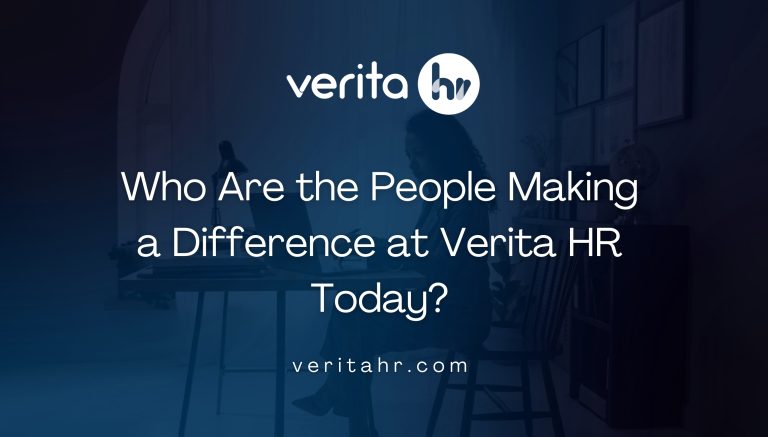In 2025, we’re seeing a candidate-driven job market, which means attracting top talent is trending towards ‘difficulties ahead.’
Just like modern consumers who extensively research products before making purchases, candidates are more likely than ever to assess potential employers and job opportunities before submitting a resume. They consider factors like a company’s culture, values, and reputation, often long before they even think of applying.
As a result, good recruitment practice has become more and more like an excellent marketing campaign, designed to entice and attract new employees.
We’ll explore what recruitment marketing involves, why it matters, and go step-by-step on how to develop a successful recruitment marketing strategy.
What is Recruitment Marketing?
Recruitment marketing is the ongoing strengthening of a recruitment brand in the talent marketplace. This strategy allows potential candidates to become familiar with a brand, preparing them to apply to the company before they start job hunting.
It uses marketing principles—such as content marketing, social media engagement, and inbound communication—to attract qualified candidates.
The Importance of Recruitment Marketing
Recruitment marketing allows companies to differentiate themselves early and often in a competitive hiring landscape. Effectively implemented, it consistently positions an organization as a more desirable workplace to apply to than others, leading to higher-quality candidate applications overall.
Here are five key benefits recruitment marketing offers businesses:
- Attracts Higher-Quality Talent
Recent findings show the average cost per hire is nearly $4,700. A strong employer brand attracts candidates who share your organizational values and align closely with job requirements, leading to improved candidate quality from the outset, avoiding turnaround costs and wasted training.
- Builds Stronger Employer Brand Awareness
86% of surveyed HR professionals believe that recruitment is becoming more like marketing, emphasizing the importance of employer branding and candidate engagement. Regular, strategic outreach and content sharing are key to improving brand recognition in the job market.
- Enhances Candidate Engagement
One-third (34%) of candidates in 2022 reported not hearing back from employers two months after applying, leading to frustrating experiences that can hurt an organization’s employment brand. Proactive marketing keeps potential candidates engaged even when there are no immediate openings. A nurtured talent pipeline allows you to fill roles quickly when positions do arise.
- Increases Hiring Success Rates
Over time, you’ll get a better idea of your ideal candidates. This should lead to improvements in your candidate acceptance rates over time. With over three-quarters (77%) of HR professionals reporting difficulties in recruiting for full-time regular positions, it’s good to take advantage where you can.
- Improves Employee Retention
Recruitment marketing transparently communicates your organization’s culture and expectations, enabling candidates to self-select early. As a result, new hires often find a better career match than they would have otherwise, decreasing turnaround.
Developing Your Recruitment Marketing Strategy
Effective recruitment marketing strategies take good planning efforts and collaboration between stakeholders. The following guide should provide a good starting point:
Step 1: Defining and Researching Your Ideal Candidate
First, clearly outline two or three ideal candidate personas. Identify particular skills, experience levels, demographics, values, and career aspirations that meet your most important staffing objectives.
Then, you can conduct some market research to better understand where the candidates you’re looking for spend their time, how they prefer to engage with information, and what competing employers are already doing to attract similar talent.
Step 2: Creating an Employer Value Proposition (EVP)
Your employer value proposition (EVP) is a clear expression of what your organization offers its employees that differentiates it from the pack. Some common EVPs are high growth potential (a startup), exceptional employee benefits (government work), a respected brand reputation (large multinational), or a vibrant company culture. Whatever it is, your EVP should be made clear, front and center.
The best way to do this is through a clear, consistent brand message that resonates across all your communications.
Step 3: Mapping Out the Recruitment Marketing Funnel
Much like a sales funnel, a clear recruitment marketing funnel guides individuals from initial awareness to putting in an application.
There are 4 distinct parts to a good recruitment funnel:
- Awareness: Candidates learn about your employer brand through content marketing, social media outreach, employer branding campaigns, and recruitment ads.
- Interest: Engage candidates further through extra content like employee testimonials, career pages, videos, and email newsletters, keeping them coming back.
- Decision: Allow the candidate to find detailed information that helps them make a concrete decision. For example, glowing employee reviews, benefits information, culture videos, employer ranking sites, and detailed role descriptions.
- Action: A mobile-friendly application process, along with effective calls-to-action (CTAs) allows candidates to apply whenever they are ready.
Step 4: Choosing the Most Relevant Content and Channels
When it comes to your content channels, there are many to choose from these days. Your marketing research can help you to select the most effective ones for your company, but here are just some of the main options:
- Career sites: Engineer your career pages to highlight your EVP and feel authentic to the company – you don’t want candidates to just glaze over it.
- Blogs and videos: Focus on authentic content, such as employees’ stories and company culture.
- Social media: Active, authentic engagement across platforms relevant to your candidate personas—LinkedIn, Instagram, Facebook, or TikTok, depending on your audience
- Email marketing campaigns: Personalized, targeted nurture flows containing updates, career advice, or role-specific alerts
Step 5: Setting Clear Goals and Measuring Success
Recruitment marketing, like most consumer marketing, works best when it is data-driven. Set clear KPIs (Key Performance Indicators) that align with your organization’s overall hiring objectives, such as the number of qualified applicants, conversion rates, or reduced hiring timeframes. Together, your analytics should be able to guide you to the right methods for your recruitment needs.
Final Thoughts
Developing your recruitment marketing strategy involves understanding clearly whom you want to attract, communicating your EVP, and offering easy to access and engaging content through the right channels.
Verita HR specializes in providing additional resources and strategic support for a company’s recruitment process. By partnering with us, you can proactively position yourself as an employer of choice, attract better talent from the available pool, and drive long-term, sustainable business growth.
Verita HR offers services including RPO | Permanent Recruitment | Outsourcing | Media Services
#EmployeeValueProposition #VeritaHR #Talent #EmployerBranding #RecruitmentMarketing #Funnel #CandidateExperience #HiringStrategy
About Verita HR News
Content at Verita HR News is brought to you in collaboration with the editorial team at Magazyn Rekruter. Magazyn Rekruter, a brand within Verita HR Group in Poland, is the longest standing recruitment and human resources industry magazine in Central Eastern Europe. The first issue was published in March 2010. Find out more at: Portal Branży HR i Biznesu (magazynrekruter.pl)
See Also:
What Defines Talent in 2025? – Verita HR
What Does an Organizational Development Manager Do? – Verita HR
What are the Recruitment Trends you need to watch in 2025? – Verita HR






